Double the Donation + MissionTracker Unlock Corporate Volunteer Opportunities
Double the Donation is thrilled to announce its newest partnership…
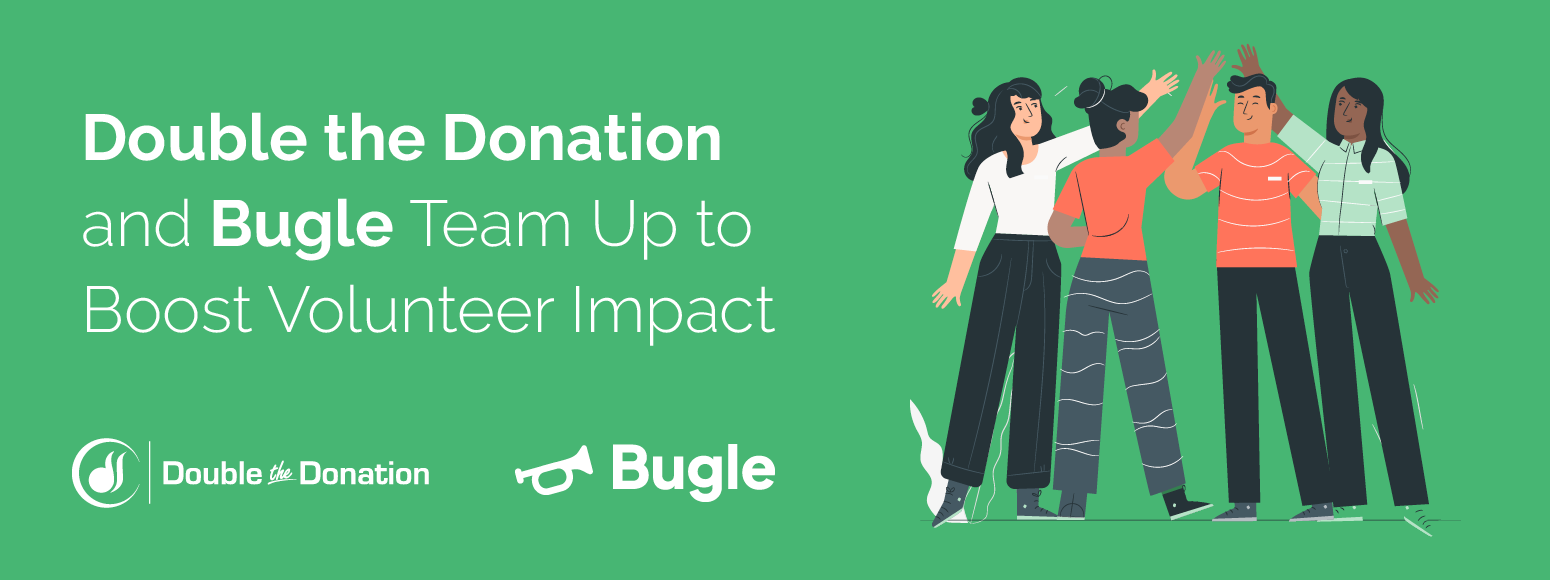
New Integration: Double the Donation and Bugle Team Up to Boost Volunteer Impact
Double the Donation is thrilled to launch a new partnership with…
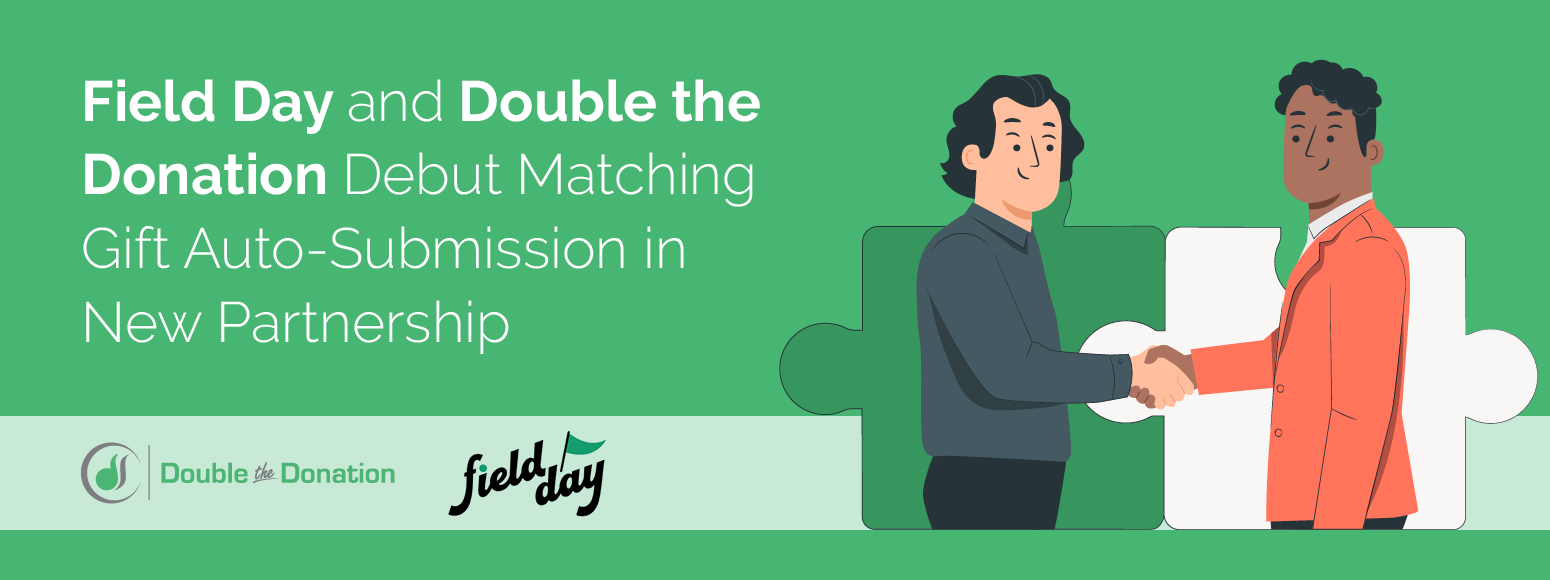
Field Day and Double the Donation Debut Matching Gift Auto-Submission in New Partnership
Double the Donation is proud to partner with Field Day to help…
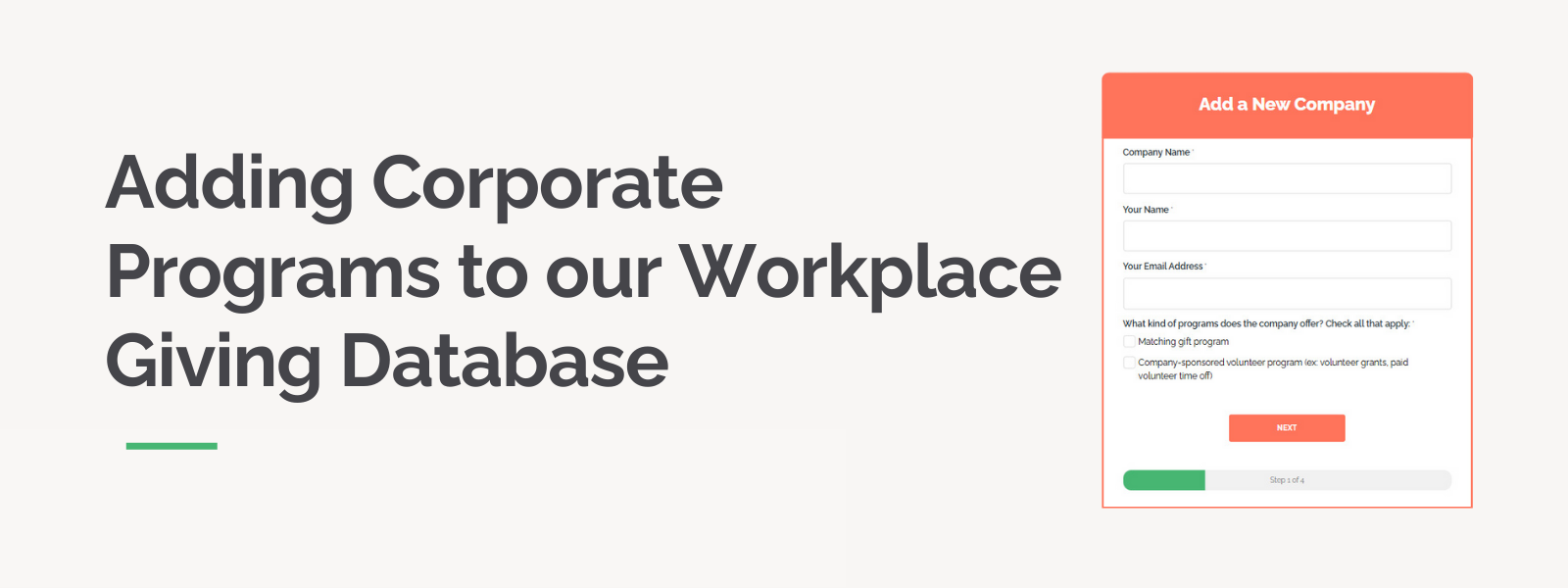
Adding Corporate Programs to our Workplace Giving Database
In today’s landscape, companies are increasingly focusing on…
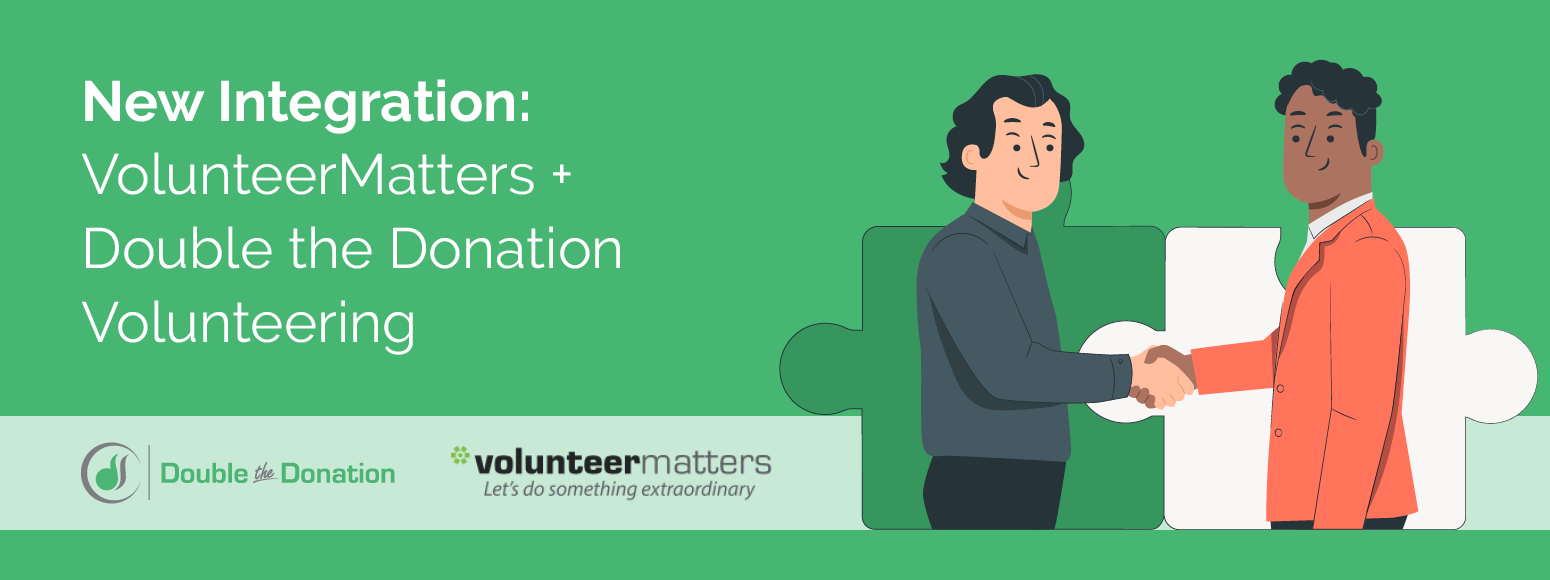
VolunteerMatters and Double the Donation Launch Partnership to Support Corporate Volunteerism
Double the Donation is excited to announce its latest partnership…
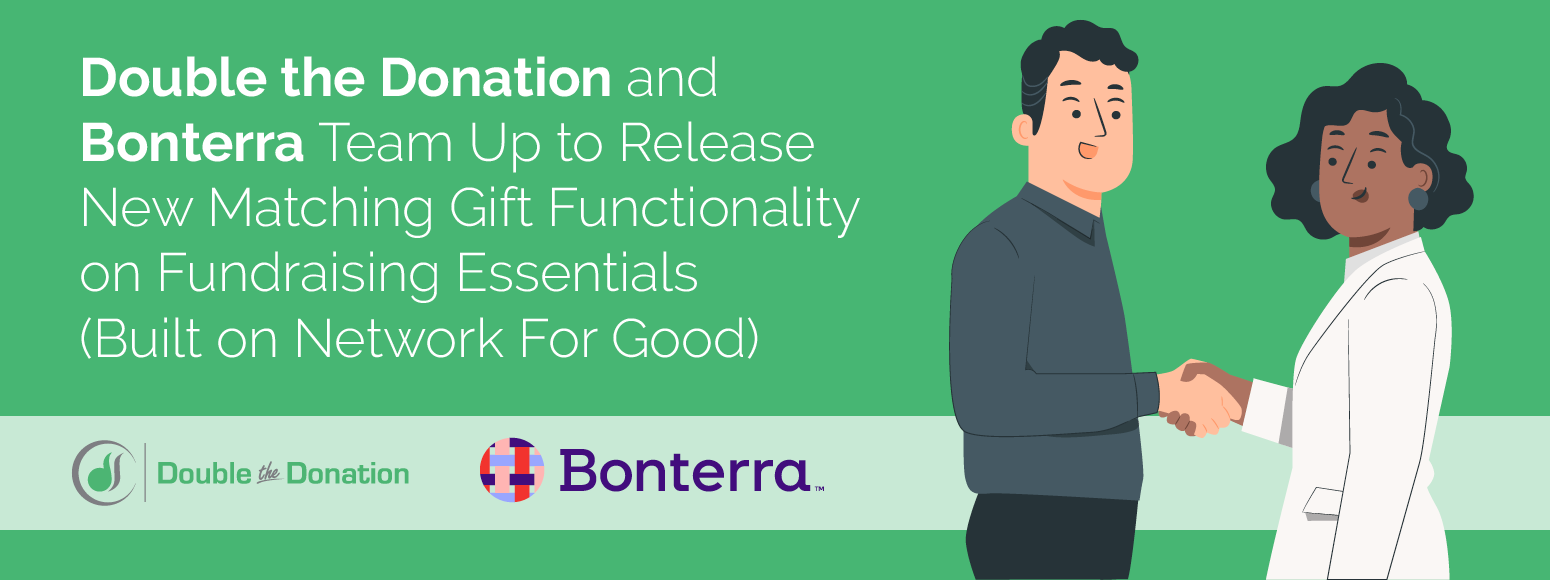
Double the Donation and Bonterra Team Up to Release New Matching Gift Functionality on Fundraising Essentials (Built on Network For Good)
Double the Donation is excited to announce an expanded partnership…
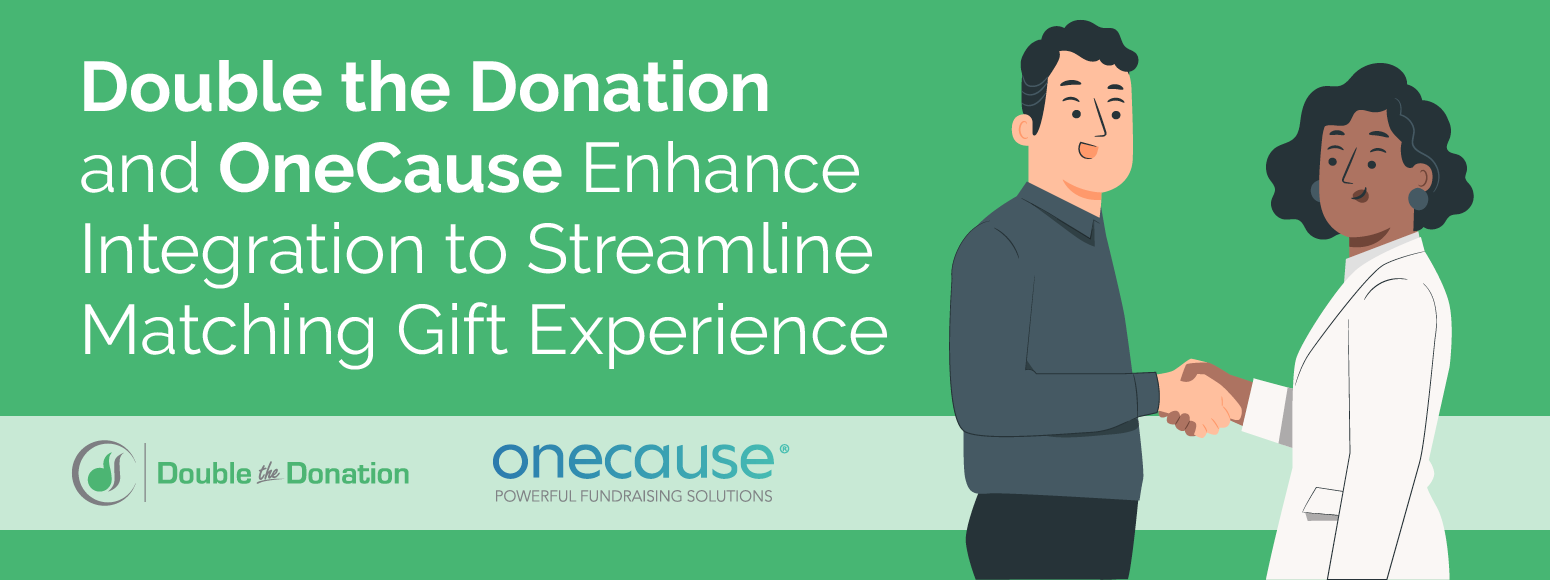
Double the Donation and OneCause Enhance Integration to Streamline Matching Gift Experience
Double the Donation and OneCause are excited to debut new integration…
Ecopixel Integrates with Double the Donation to Provide Advanced Matching Gift Solution for Nonprofits
Double the Donation and Ecopixel are proud to announce a new…
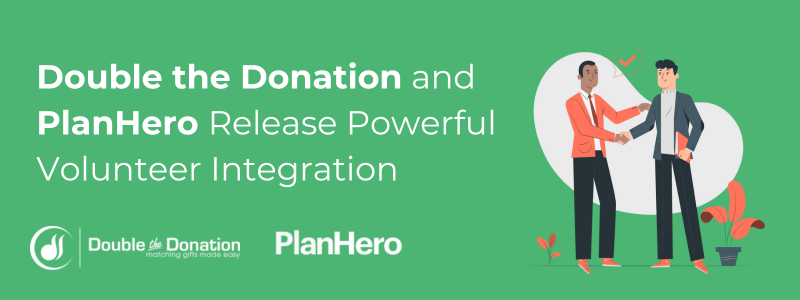
Double the Donation and PlanHero Release Powerful Volunteer Integration
Double the Donation is thrilled to unveil its latest partnership…
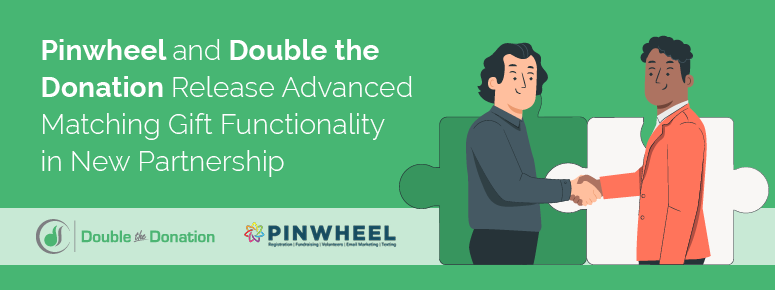
Pinwheel and Double the Donation Release Advanced Matching Gift Functionality in New Partnership
Double the Donation is excited to announce a new partnership…

